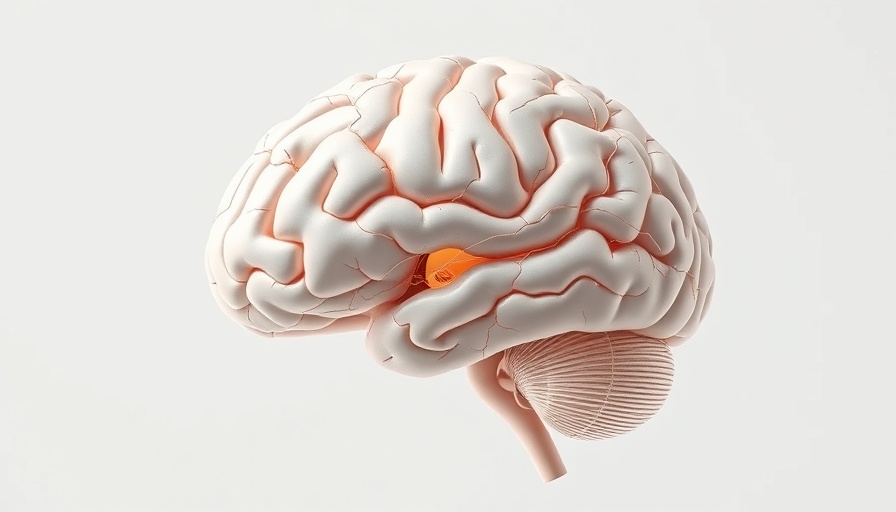
Understanding PTSD in Women: Emergence of New Research Insights
The impact of sexual assault on women's mental health is profound, with approximately 70% of female survivors developing Post-Traumatic Stress Disorder (PTSD). Recent research conducted by a team from the Hospital Clinic of Barcelona has shed new light on the neurological consequences of such trauma, particularly focusing on the brain's emotional response systems, namely the amygdala and prefrontal cortex. This study is especially significant as it appears to be one of the largest connectivity studies examining the interplay between trauma and brain function in women.
Groundbreaking Findings
Dr. Lydia Fortea and her team discovered that many women with PTSD stemming from recent sexual assaults exhibit severe reductions in communication between the amygdala, a region central to fear processing, and the prefrontal cortex, which plays a crucial role in emotion regulation. In 22 out of 40 women studied, this connection had diminished to near-zero levels, leading to difficulties in managing fear and emotional responses. Notably, while this loss of connectivity occurs, it does not necessarily correlate with the severity of PTSD symptoms, suggesting a complex relationship between brain function and psychological health which remains to be fully understood.
The Neuroscience Behind Trauma Responses
Neuroscience has long established that various forms of trauma can lead to alterations in brain connectivity, as illustrated by earlier studies on natural disasters and combat-related PTSD. However, the focus on sexual assault presents a unique perspective. It's essential to realize that the trauma women experience is often deeply intertwined with societal and cultural contexts. Thus, the psychological aftermath can differ significantly compared to other trauma forms.
Analysis from previous systematic reviews highlights the biological underpinnings of PTSD, noting that excessive rumination and deficient fear extinction mechanisms present in females can escalate vulnerability to more serious PTSD symptoms. These behavioral patterns, stemming from cultural gender norms, could elucidate why females are at a higher risk for PTSD after traumatic incidents like sexual assault as compared to their male counterparts.
Connecting Trauma with Depression and Anxiety
The connection between PTSD and other mental health disorders, such as Major Depressive Disorder (MDD), is also indicated in the literature. Women who endure traumatic experiences, particularly during childhood, often present with additional comorbid disorders, emphasizing the critical need for integrated approaches in treating PTSD. The interaction between trauma exposure and emotional coping mechanisms often leads to a cascade of mental health challenges, reinforcing the necessity for supportive therapies that address both the psychological and the neurological implications being revealed through recent studies.
Future Directions: Could Brain Connectivity Predict Treatment Outcomes?
One of the study's most promising aspects is its potential application in clinical settings. Understanding the neural signatures associated with PTSD could pave the way for identifying which patients are at greater risk of severe outcomes. If future research confirms these findings, clinicians could develop predictive models based on brain connectivity patterns, allowing for earlier interventions and tailored treatment strategies for survivors of sexual violence. The goal would be to improve overall recovery rates and enhance PTSD management.
Your Role in Community Health and Wellness
The ramifications of these findings extend beyond individual patients, informing community health approaches. As we work towards optimal health and wellness in society, increasing awareness around the neurological impacts of trauma on women is vital. Additionally, advocacy for better support systems for survivors, including access to mental health resources and educational materials, can empower individuals and communities to address the ongoing impact of sexual violence.
Conclusion: A Call to Action
The ongoing research into PTSD in women provides critical insights that can impact health and wellness initiatives globally. As more studies accumulate, the imperative to create supportive environments for survivors becomes ever clearer. Engaging with local health and wellness centers can ignite community efforts to foster healing and resilience in victims. For anyone involved in healthcare, psychology, or community advocacy, these findings urge the integration of neuroscience into treatment approaches, illuminating the path toward healing for many women impacted by trauma.
 Add Element
Add Element  Add Row
Add Row 




Write A Comment